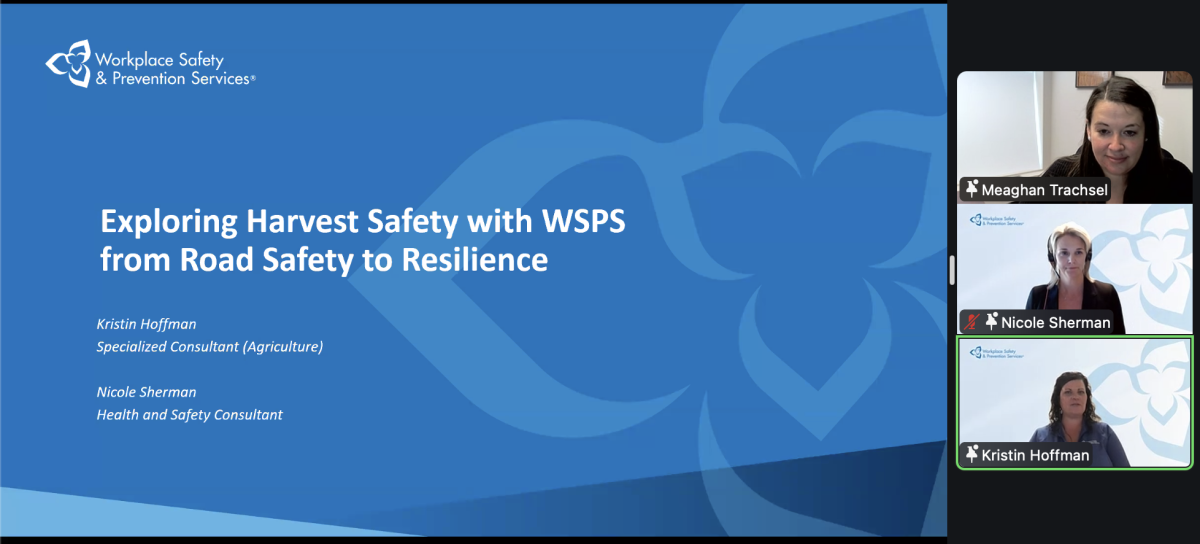The presidents of the general farm organizations in Quebec and Alberta are now the first and second vice-presidents of the Canadian Federation of Agriculture.
Christian Lacasse, a dairyman from St-Vallier, Que. and president of Quebec’s Union des producteurs agricoles (UPA), was elected last week in Ottawa as the CFA’s first vice-president, replacing Garnet Etsell.
Humphrey Banack, who farms at Round Hill, Alta. and is president of that province’s Wild Rose Agricultural Producers (WRAP), was elected second vice-president, a post which was left vacant in May 2010.
Read Also

Exploring Harvest Safety
Kristin Hoffman of WSPS explains measures for increased farm safety around harvest season
Ron Bonnett, a producer from Bruce Mines, Ont. and former head of the Ontario Federation of Agriculture, last week was formally acclaimed president of the CFA.
Bonnett now fills a role he’d held since May when the federal government named then-CFA president Laurent Pellerin as chairperson of the Farm Products Council of Canada.
Leadership duties fell to Bonnett, who then was first vice-president of the CFA, and Etsell, an Abbotsford, B.C. producer and, at the time, the CFA’s second VP.
Both Lacasse and Banack had until now served as their organizations’ representatives on the CFA board of directors.
Lacasse said in a UPA release Thursday that his duties with the CFA would be in addition to those of his UPA post. Banack, in a WRAP release Thursday, also said he “looks forward to representing the agriculture producers on both the provincial and national level.”
The Ottawa-based CFA is the farmer-funded national umbrella organization representing provincial general farm organizations and national commodity groups, through which it represents over 200,000 Canadian farm families from coast to coast.














